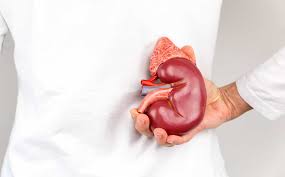Publication
Article
CURE
Web Exclusive: Types of Kidney Cancer
Author(s):
Although renal cell carcinoma is the most common type, there are other types of kidney cancer.
Renal cell carcinoma (RCC) is by far the most common type of kidney cancer. It accounts for about 9 out of 10 kidney cancers. There are several subtypes of RCC, based mainly on how the cancer cells look under a microscope:
Clear cell renal cell carcinoma
This is the most common form of renal cell carcinoma. About 8 out of 10 people with renal cell carcinoma have this kind of cancer. When seen under a microscope, the cells that make up clear cell RCC appear very pale or clear.
Papillary renal cell carcinoma
This is the second most common subtype, making up about 10 percent to 15 percent of RCC cases. These cancers form little finger-like projections called papillae in some, if not most, of the tumor. Some doctors call these cancers chromophilic because the cells take in certain dyes used so the tissue can be seen under the microscope, and look pink.
Chromophobe renal cell carcinoma
This subtype accounts for about 5 percent of RCCs. The cells of these cancers are also pale, like the clear cells, but are much larger and have certain other features that can be recognized.
Collecting duct renal cell carcinoma
This subtype is very rare. The major feature is that the cancer cells can form irregular tubes.
Unclassified renal cell carcinoma
In rare cases, renal cell cancers are labeled as unclassified because the way they look doesn't fit into any of the other categories or because there is more than one type of cell present.
About 5 percent to 10 percent of cancers in the kidney are transitional cell carcinomas, also known as urothelial carcinomas. Under the microscope, the cells look like bladder cancer cells. Studies have shown that, like bladder cancer, these cancers are often linked to cigarette smoking and workplace exposures to certain cancer-causing chemicals. People with transitional cell carcinoma often have the same signs and symptoms as patients with renal cell cancer -- blood in the urine and, sometimes, back pain.
These cancers are usually treated by surgically removing the whole kidney and the ureter, as well as the portion of the bladder where the ureter attaches. About 9 out of 10 transitional cell carcinomas of the kidney are curable if they are found at an early stage.
About 5 percent of kidney cancers are Wilms tumors, which is almost always found in children.
Renal sarcomas are a rare type of kidney cancer (less than 1% of all kidney tumors) that begin in the kidney's connective tissue.
Reproduced with permission from the American Cancer Society





